How to brine corned beef at home – an easy photo tutorial on making nitrate-free, refined sugar-free corned beef.
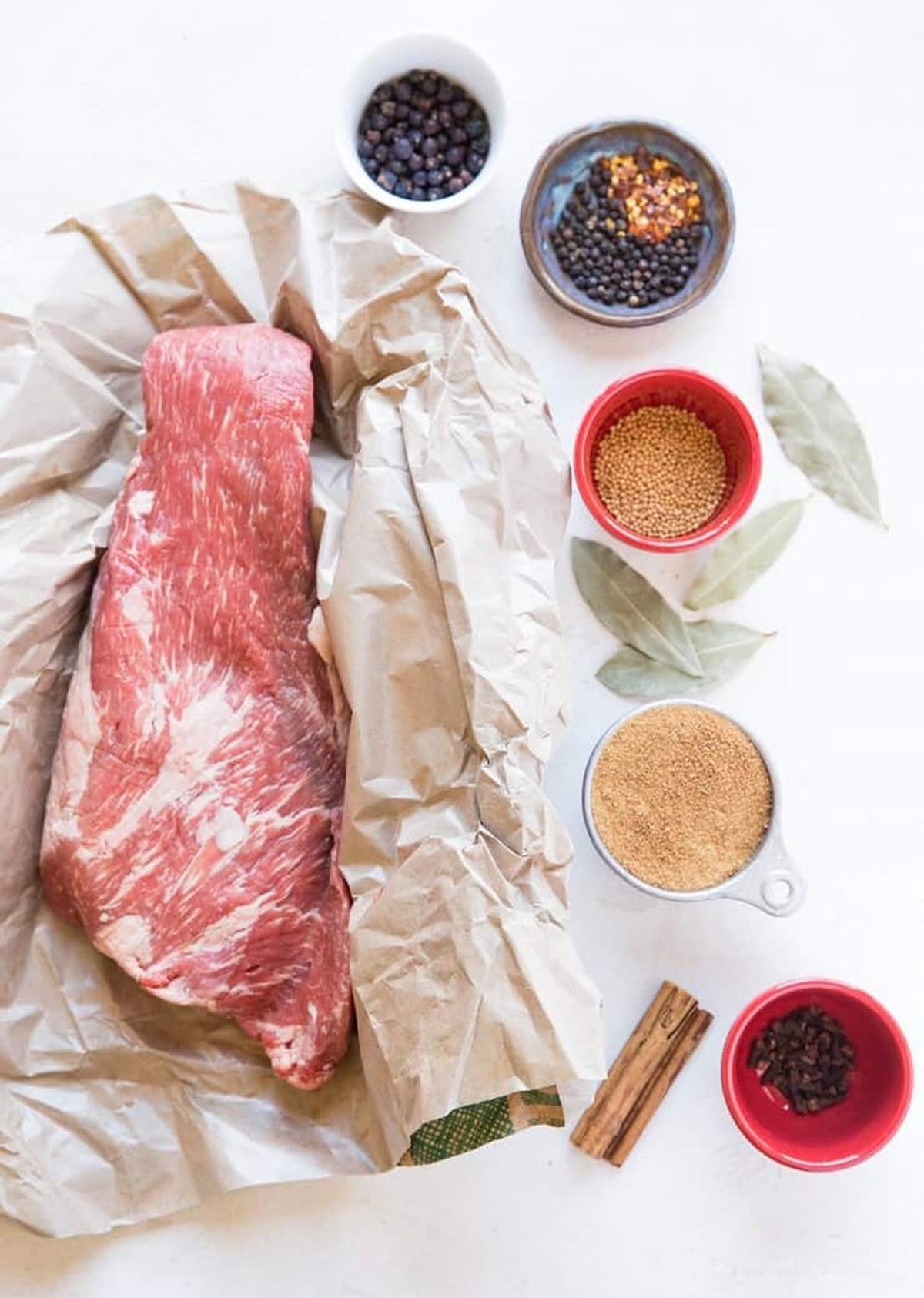
Every year before St. Patrick’s Day, I told myself, “this is the year I brine my own corned beef.”
Yet every year, I waited for too long and inevitably ended up buying the pre-brined version from the store.
That is, until I started brining my own corned beef in back in 2020 and never looked back.
Corned beef takes about 5 to 7 days to brine and the process is quite easy!
Simply toast up some pickling spices and make a brine. The brine does all of the hard work, as the meat simply marinates in it for many days.
I’m diving into how you can brine your own corned beef at home as well as providing an overview on the various cooking methods you can choose.
First, let’s discuss why one would brine their own beef.
Why Brine Your Own Corned Beef?
Ultimately, you have control over everything that happens throughout the process, from keeping it nitrate-free, selecting the type of beef you want to use, making it refined sugar-free, and choosing your own picking spices. Let’s dive deeper!
Nitrate-Free Corned Beef:
Store-bought corned beef is cured using sodium nitrate, also known as pink curing salt, which is not to be confused with pink himalayan sea salt.
This is what gives the meat that iconic pink color and its purpose is to preserve the meat, inhibiting the growth of bacteria.
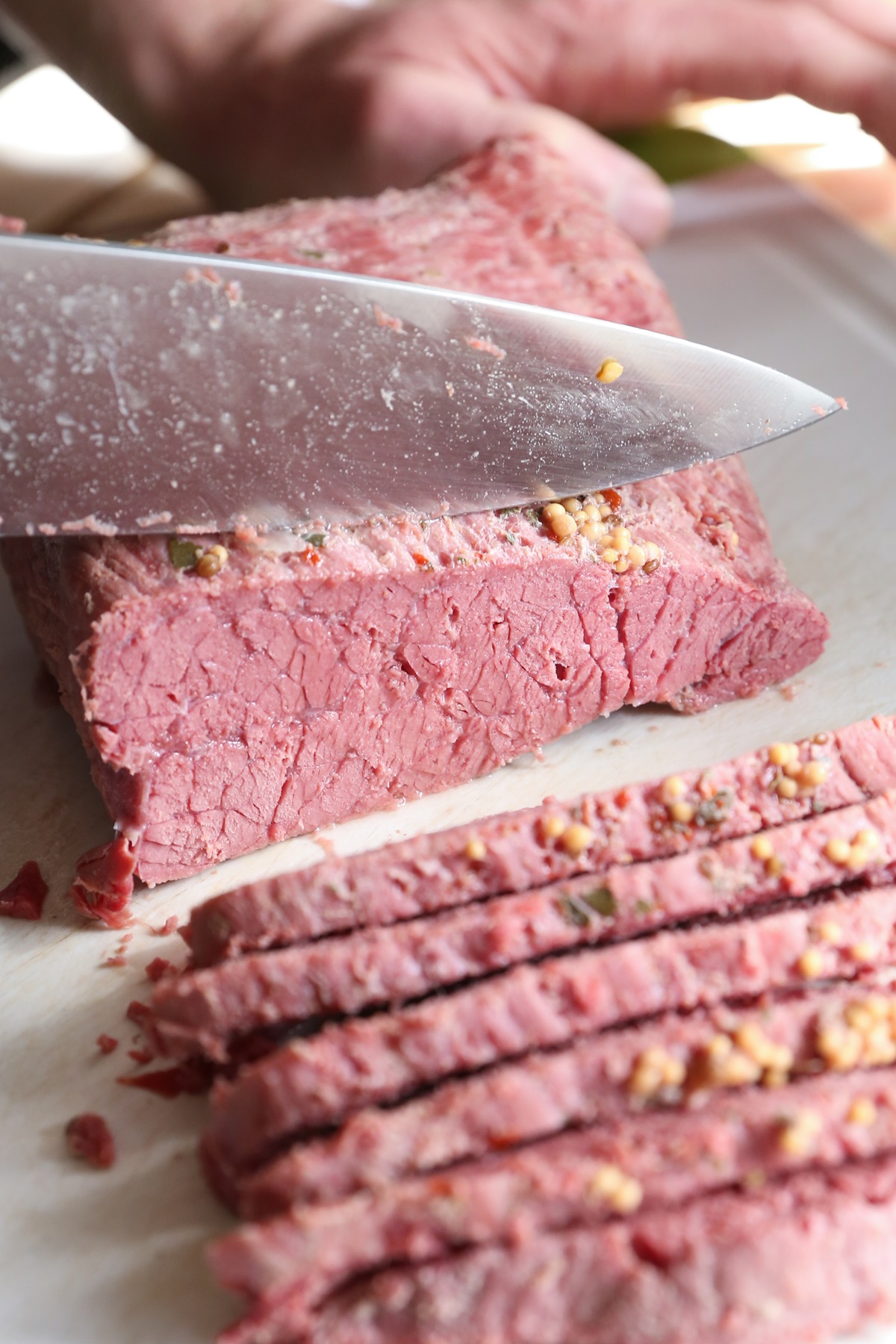
The above photo shows the pink hue of store-bought corned beef.
Nitrate-free corned beef without the sodium nitrate looks like actual meat. It is grey/brown in color instead of pink.
In addition, pink curing salt adds nitrates to the meat, similar to curing deli meat, prosciutto, pepperoni, bacon, etc., which is not great for the human body. In fact, it is toxic in high amounts.
This isn’t an issue if you aren’t getting nitrates from other sources or eating cured meat regularly, but it does become a problem over time if you have a diet high in cured meat.
Some people are more sensitive to nitrates than others. I know a few people who are so sensitive that they stay away from all cured meats (including corned beef) altogether. No fun when you want to celebrate St. Paddy’s Day, right?
Well, thankfully we can make our own corned beef minus the pink curing salt at the expense of losing that pink color.
The added bonus is that we don’t have to worry about triggering anyone’s sensitivity to nitrates.
You don’t need to worry about bacteria in the meat as long as you cook it soon after brining it (on day 5, 6, or 7 of the brine).
If you want to cure the meat using sodium nitrate, follow the recipe and instructions for Home Cured Corned Beef from Simply Recipes.
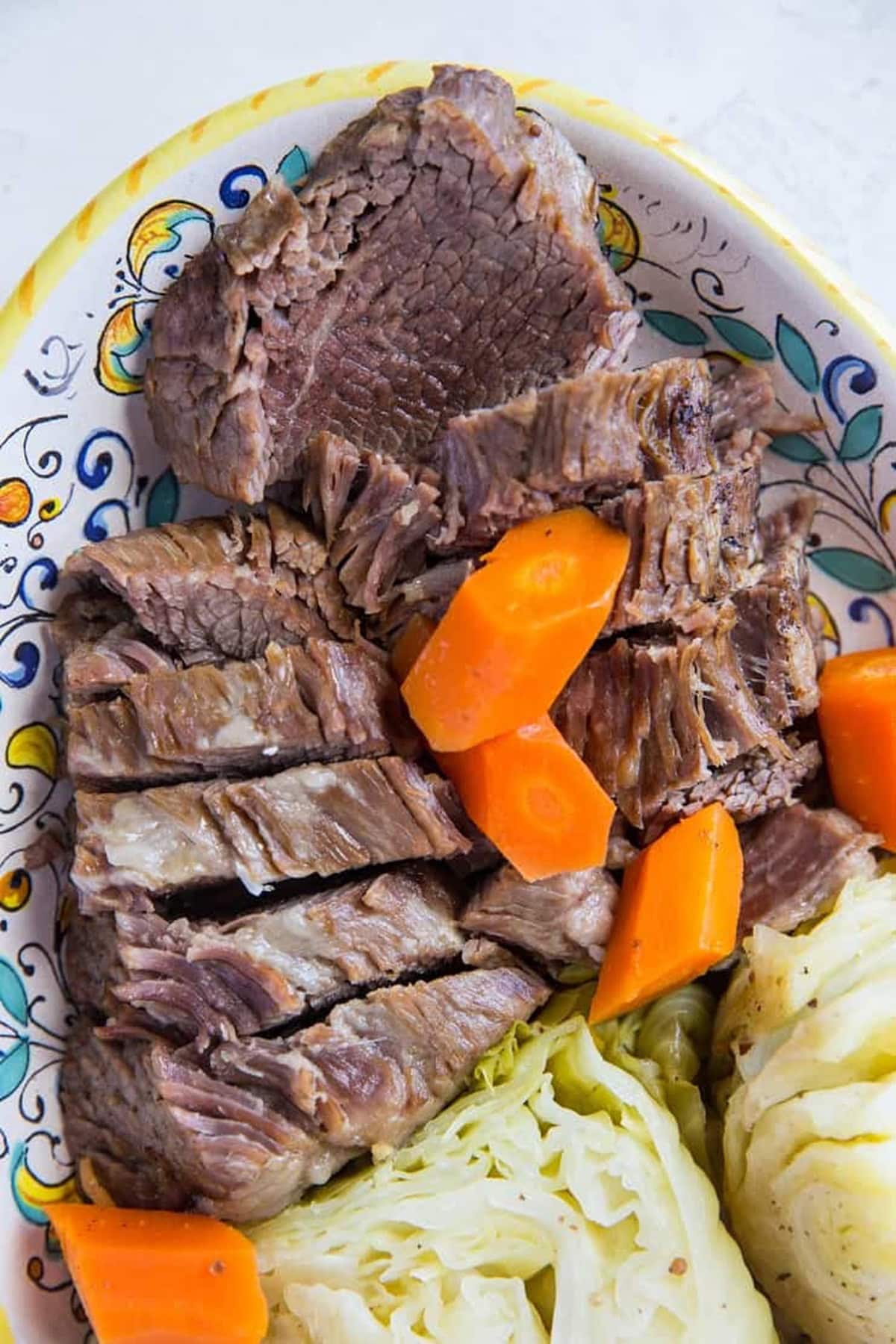
Quality and Quantity of Beef:
Brining your own corned beef enables you to select the fat content, cut, and quality of beef. You can go with a local grass-fed brisket (or tri tip), which is always my preference.
This way you’re sourcing a clean hunk of meat and also adding clean ingredients to it without unnecessary filler.
In addition, you can brine as little or as much beef as you’d like. Since you’re going through the process of brining the beef anyway, why not brine some extra and save it for later?
For best results, brine and freeze extra meat. You can use a Food Saver to vacuum seal it so that it stays fresh in the freezer. This avoids freezer burn and allows you to thaw and enjoy corned beef at your leisure (not just on St. Patrick’s Day!).
Refined Sugar-Free Corned Beef:
Store-bought corned beef contains cane sugar, which helps add flavor and also lends to preservation. While I certainly don’t avoid cane sugar in small amounts, it’s just nice to be able to omit it when possible.
I use coconut sugar in my brining solution instead of brown sugar to keep it cane sugar-free. If you don’t avoid cane sugar and don’t keep a supply of coconut sugar on hand, no sweat! Simply use brown or granulated sugar instead.
Pickling Spices for Corned Beef:
Typical pickling spices for corned beef brining liquid are whole mustard seed, black peppercorns, whole cloves, juniper berries, red pepper flakes, coriander seed, and cardamom pods.
Also add in bay leaves, fresh or ground ginger, garlic, cinnamon sticks, etc. if you’d like.
When brining homemade corned beef, you get to choose your pickling spices. So if there are some spices you enjoy more than others, you have the ultimate control over what goes in!
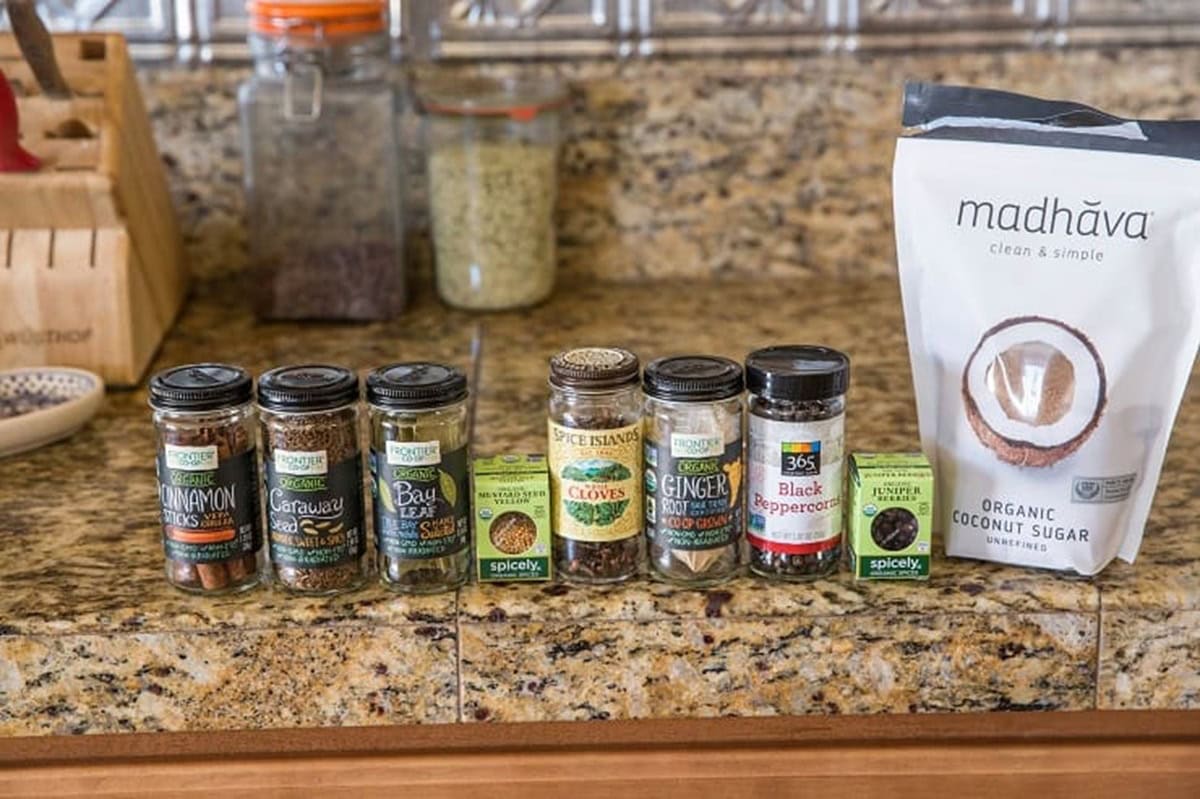
Buy a pickling spice blend either in-store or online to eliminate the added expense of procuring a ton of spices.
Why You’ll Love Homemade Corned Beef:
Why would we go through the time and effort of making corned beef when the hard work is already done for us with the store-bought version?
The primary reasons I love the concept of brining corned beef at home is you can make it nitrate-free, have control over the type of beef you use, and the process itself is a major win for your cooking resume.
I have yet to find a store-bought version of corned beef that is grass-fed, nitrate-free, and refined sugar-free, although it could be possible that it exists!
So let’s get started!
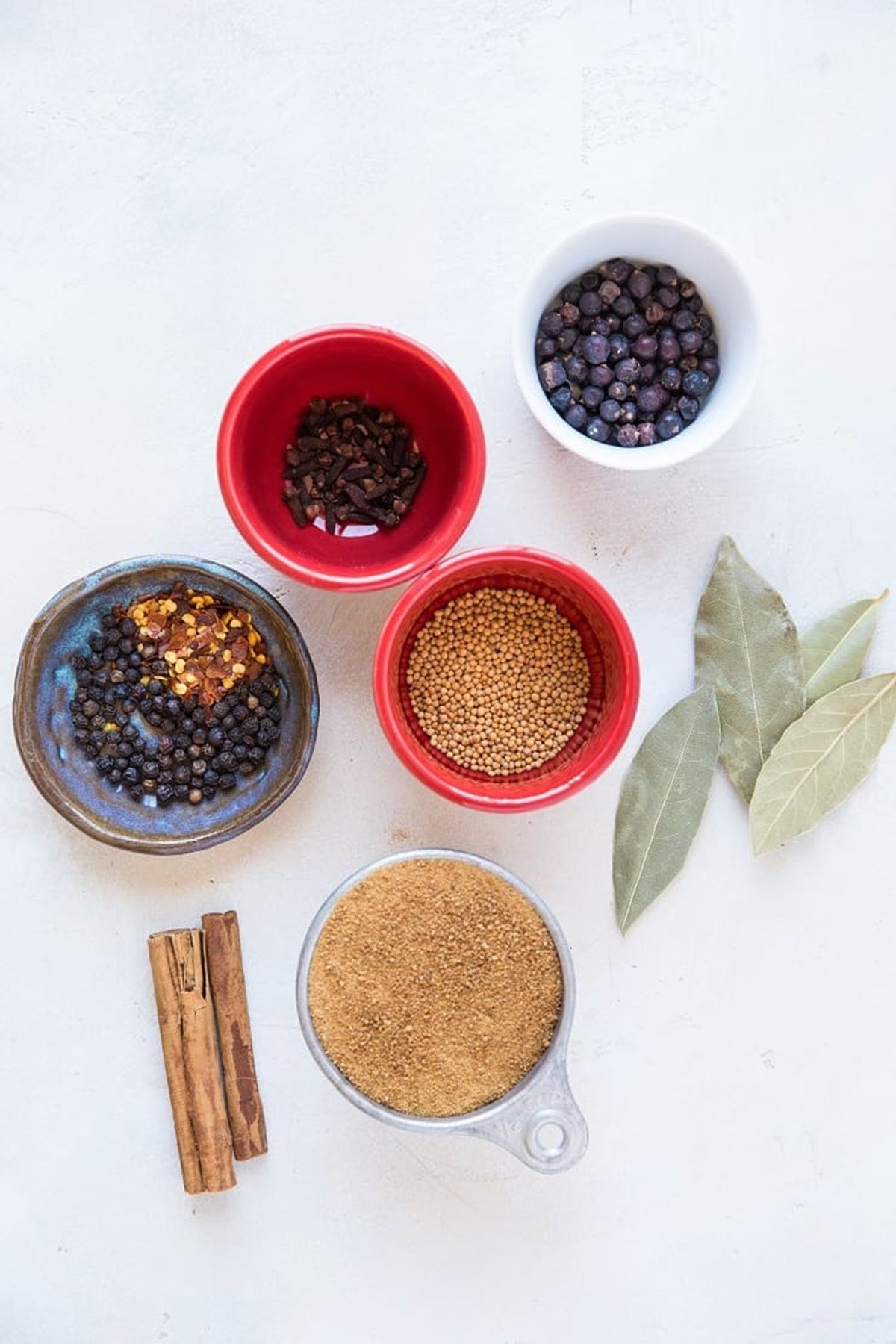
How to Brine Corned Beef at Home:
Add the pickling spices to a small skillet. Toast over medium-low to medium-heat for 1 to 2 minutes. Keep a watchful eye so that they don’t burn!
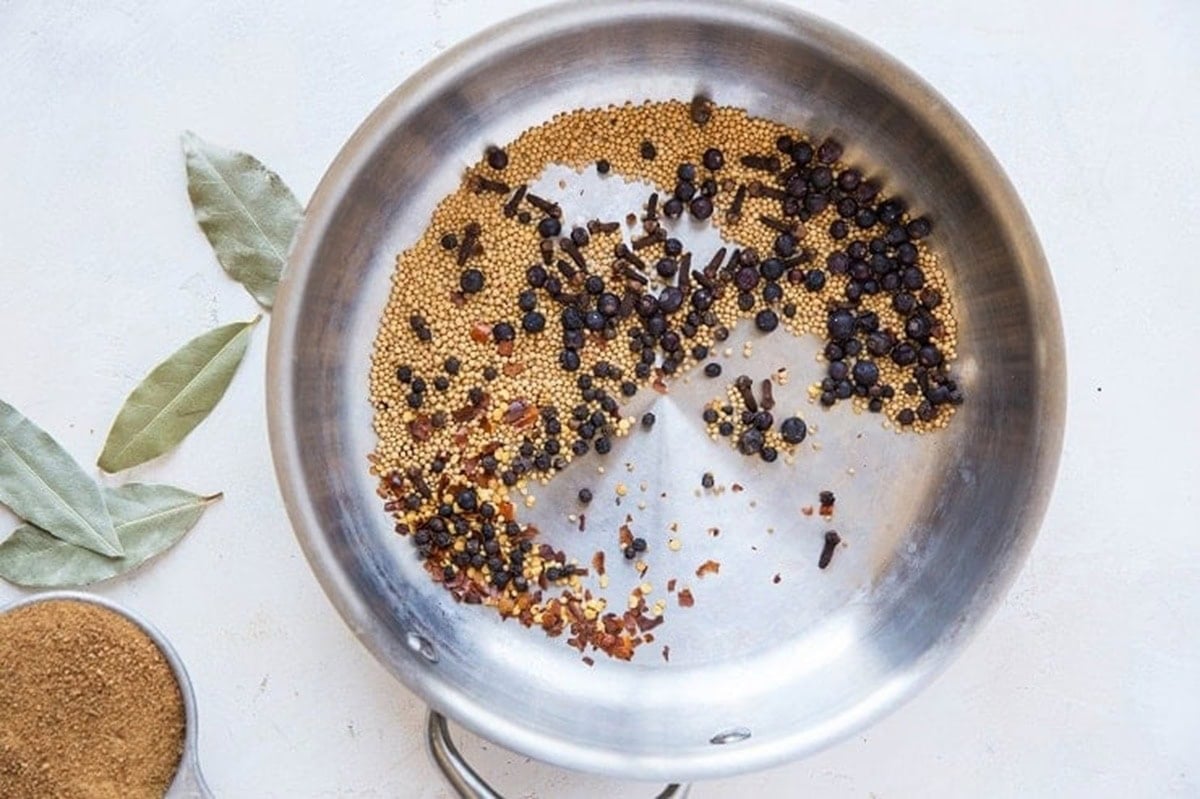
Transfer spices to a mortar and pestle and grind. It’s okay if they remain whole. Simply crush the spices to help them release flavor.
As an alternative to a mortar and pestle, you can use a spice grinder or even a small blender to grind the spices.
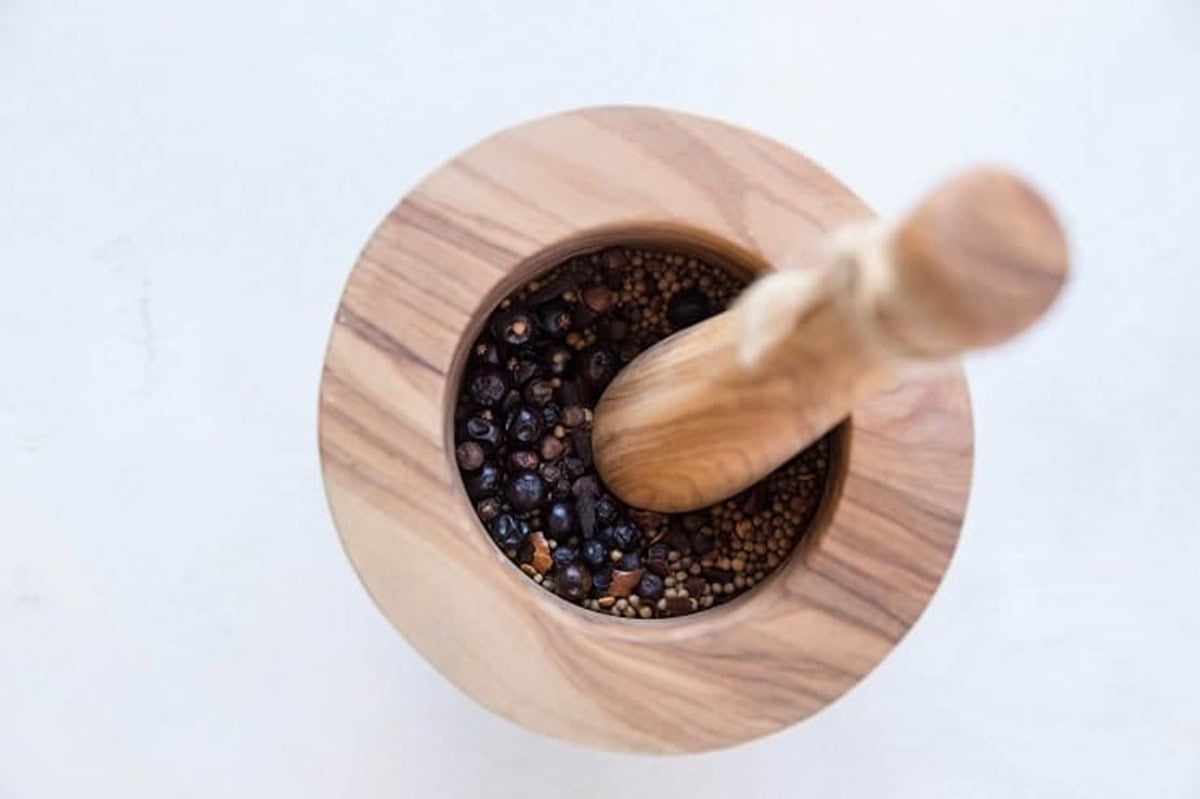
Transfer 3 tablespoons of the pickling spices to a large stock pot with 1 gallon of water, 1 cup of kosher salt and ½ cup coconut sugar to make the brine for corned beef.
Bring this mixture to a full boil.
Reserve the remaining spices for when you are ready to cook the beef.
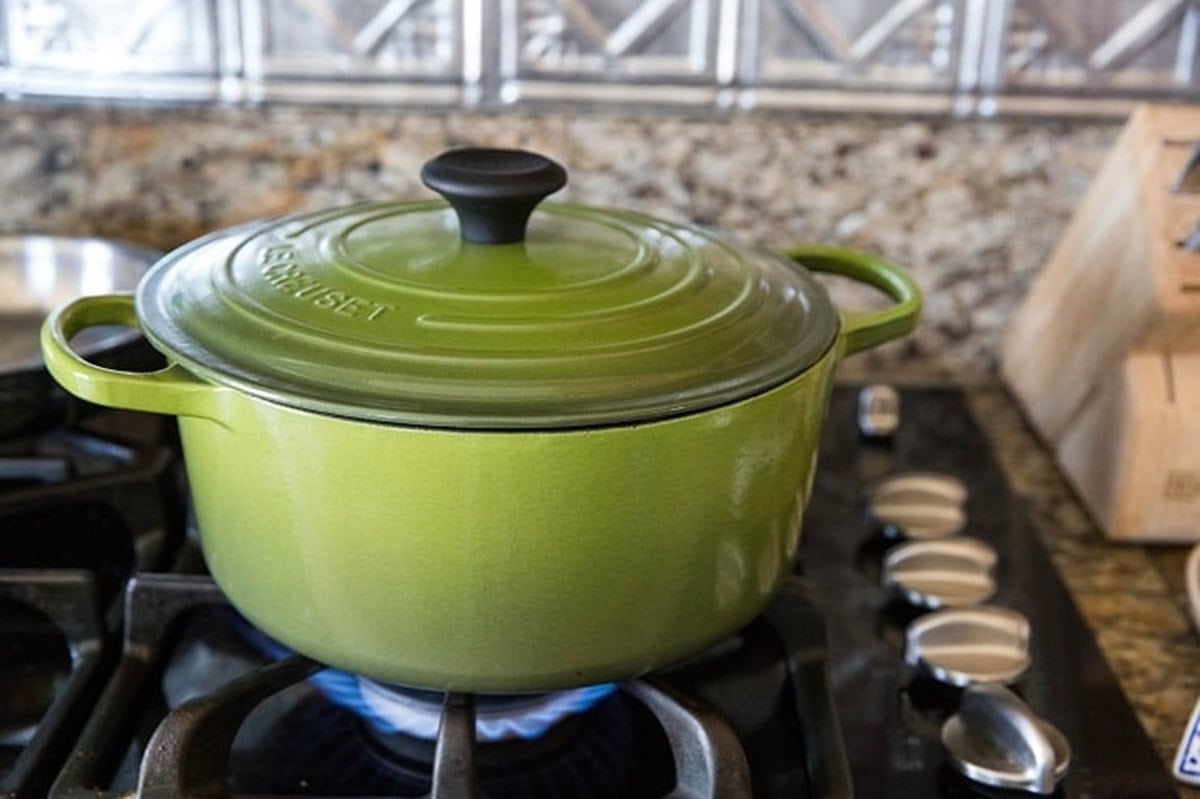
Remove from heat and allow bringing liquid to cool. Then, place the corned beef brine in the refrigerator until chilled.
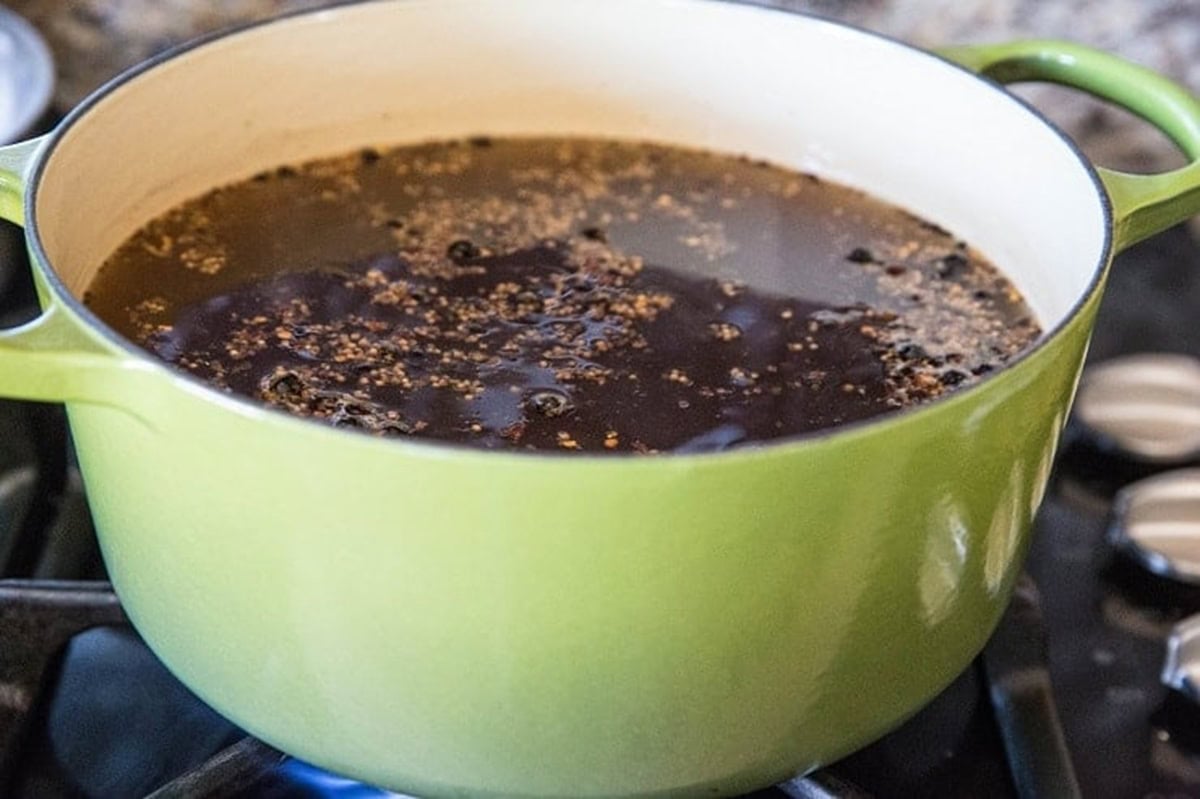
Transfer the beef brisket to a large flat glass container and pour the cooled brining liquid on top.
Depending on the size of your beef and the size of your containers, you may need two or more airtight containers.
Make sure the beef is fully covered in brining liquid. Secure the lid on the container (or containers) and place in the refrigerator.
Brine for 5 to 7 days.
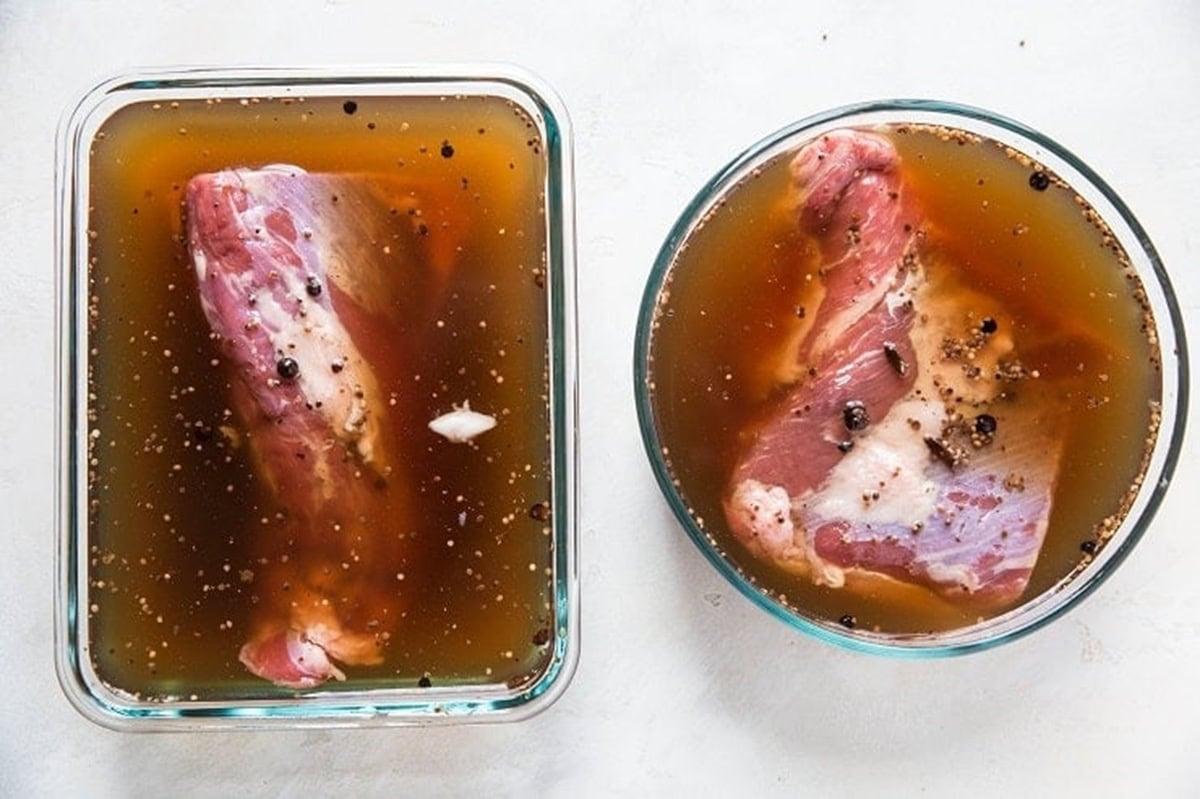
Turn the meat over once a day to ensure it brines evenly.
As an alternative to tupperware, add everything to a large freezer bag and place bag inside of a pot in the refrigerator (to avoid leaking).
When you are ready to cook the beef, remove it from the brine and rinse it under cool water.
Transfer the brined beef to your method of cooking of choice. I have included instructions for Instant Pot, slow cooker, or cooking on the stove top. Cook according to directions with additional liquid and spices.
Here are the various cooking methods you can choose once the beef has finished brining.
How to Cook Corned Beef:
There are multiple ways you can cook corned beef. My preference is via stove top or Instant Pot. Pick your poison!
Cook in the Slow Cooker:
Follow the instructions in my Crock Pot Corned Beef and Cabbage post for slow cooking the beef!
Stove Top Instructions:
Remove the beef from the brining liquid and rinse with cool water. Place beef in a large pot and cover it with 1 inch of water, broth, or a combination of water and beer (Guinness works great) or broth and beer.
Add 1 tablespoon of the pickling spices you reserved and give it a stir.
Bring to a full boil, then reduce the heat to a low simmer and cook 3 to 4 hours, until beef is very tender.
Sous Vide Corned Beef:
Love using your sous vide for ultra tender meat? Follow this how to on Sous Vide or Instant Pot Corned Beef from Perry’s Plate.
Instant Pot Instructions:
Follow my instructions for Instant Pot Corned Beef and Cabbage! It’s my favorite method of preparing it!
Get your brine on!
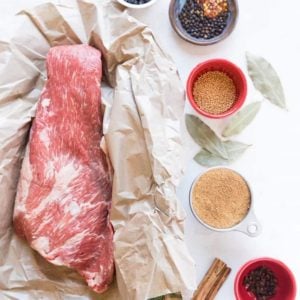
How to Brine Corned Beef
Ingredients
Pickling Spices:
- 1 Tbsp whole mustard seed
- 1 Tbsp black peppercorns
- 1 Tbsp red pepper flakes
- 1 Tbsp juniper berries
- 1 Tbsp coriander seeds
- 2 tsp whole cloves
Brined Corned Beef
- 1 5-lb beef brisket
- 1 gallon filtered water
- 1 cup kosher salt
- 1/2 cup coconut sugar
- 3 Tbsp pickling spices
Optional Spices for Cooking:
- 4 bay leaves
- 1 Tbsp ground ginger
- 2 cinnamon sticks
- 1/2 tsp ground cardamom
Instructions
Make the Pickling Spice Blend:
- Add the pickling spices to a small skillet and toast over medium-low to medium-heat for 1 to 2 minutes. Keep a watchful eye so that they don’t burn! Note: if the mixture begins to smoke, it can cause you to cough.
- Transfer toasted spices to a mortar and pestle and grind – it’s okay if they remain whole..you simply want to crush the spices to help them release flavor.
Brine the Beef:
- Transfer 3 tablespoons of the pickling spices to a large stock pot, along with 1 gallon of water, 1 cup of kosher salt and ½ cup coconut sugar to make the brine. Reserve the remaining spices for when you are ready to cook the beef. Bring the brining liquid to a full boil. Remove from heat and allow bringing liquid to cool, then place in the refrigerator until chilled.
- Place beef brisket in a glass tupperware container and pour brining liquid over it. You want to beef to be fully covered. If you don't have a container that is large enough for the beef, you can cut it into smaller portions (but try to keep the cuts large). Or, you can transfer everything to a freezer bag and place the freezer bag in a pot in the refrigerator. Secure the lid on the container and refrigerate for 5 to 7 days.
- When ready to cook the beef, remove it from the brine and rinse it under cool water. Transfer it to your method of cooking of choice, such as a pot on the stove top, Instant Pot, slow cooker or sous vide. Be sure to include the reserved pickling spices when you cook the corned beef.
Stove Top Corned Beef:
- To cook corned beef on the stove top, place the rinsed beef in a large pot and cover it with 1 inch of liquid, such as plain water, broth, or a combination of water and beer (Guinness works great) or broth and beer. Add 1 tablespoon of the pickling spices you reserved and give it a stir.
- Bring to a full boil, then reduce the heat to a low simmer and cook 3 to 4 hours, until beef is very tender.
Nutrition
This post contains affiliate links, which means I make a small commission off items you purchase at no additional cost to you.

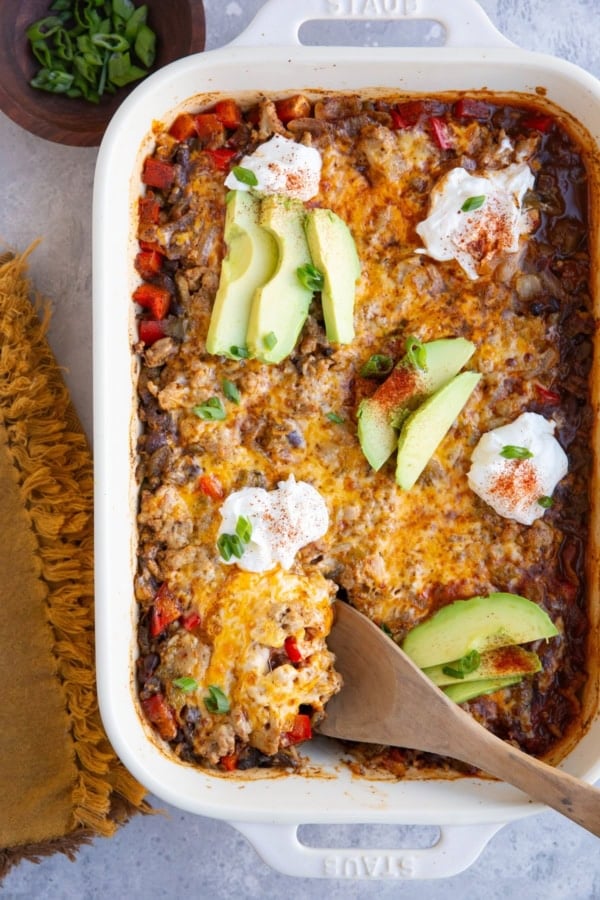
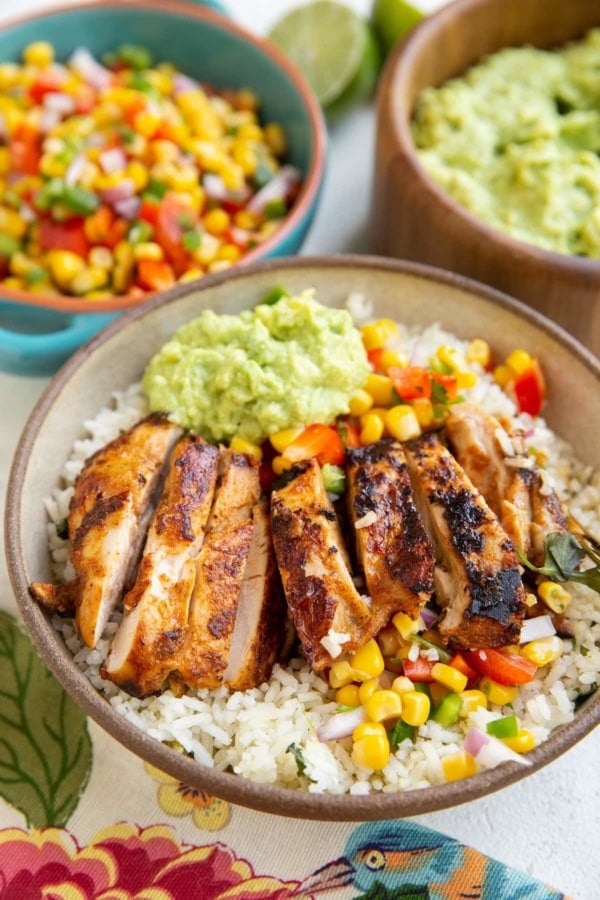
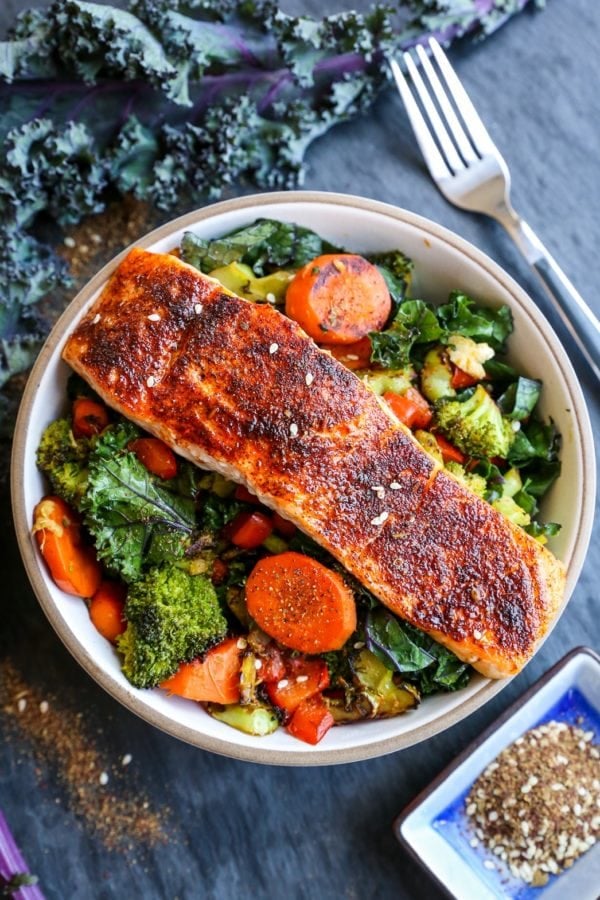
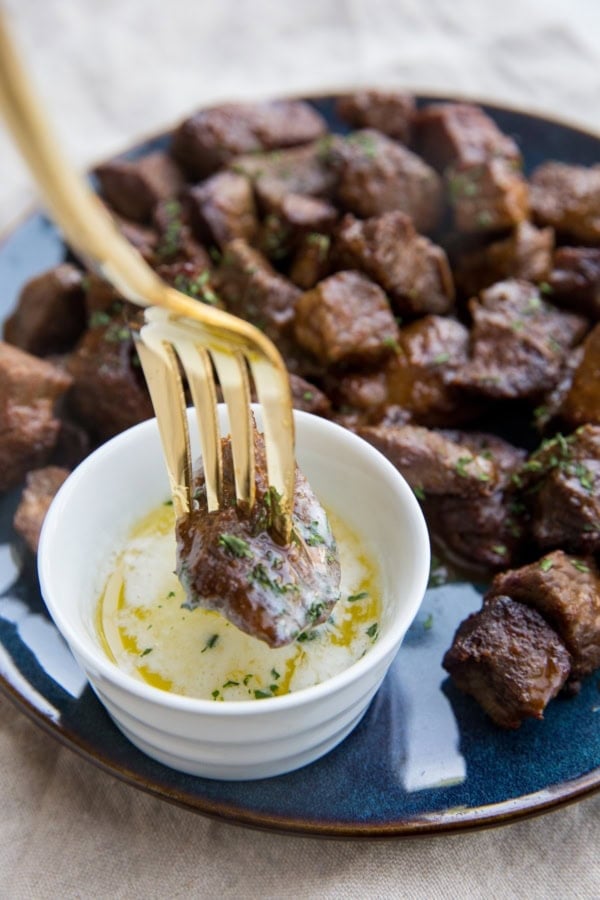









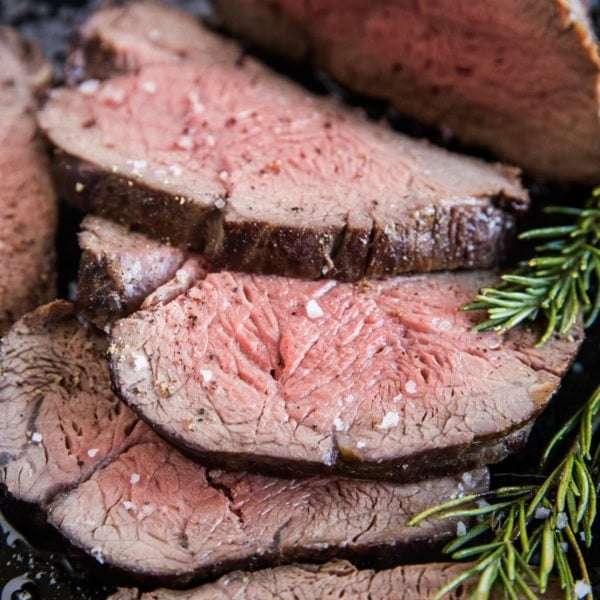
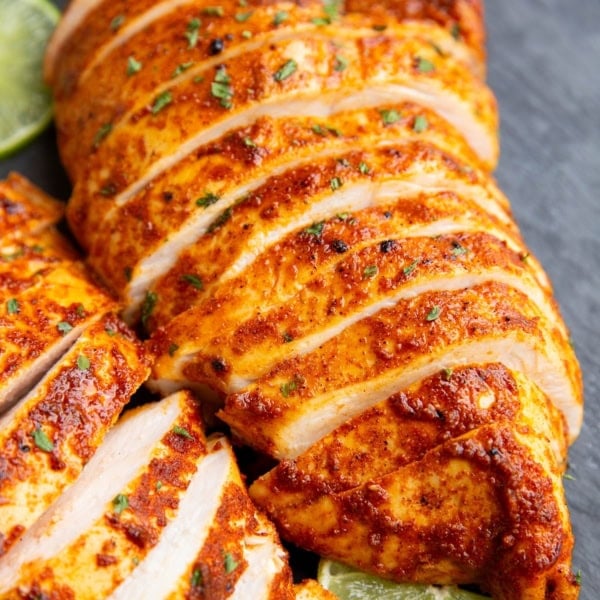
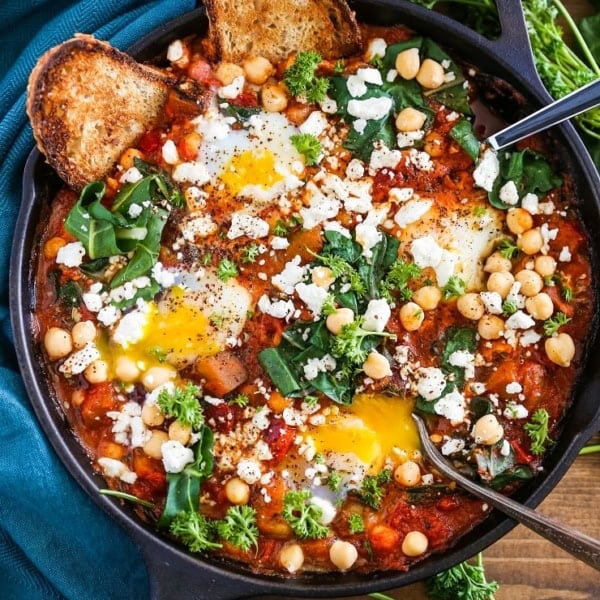
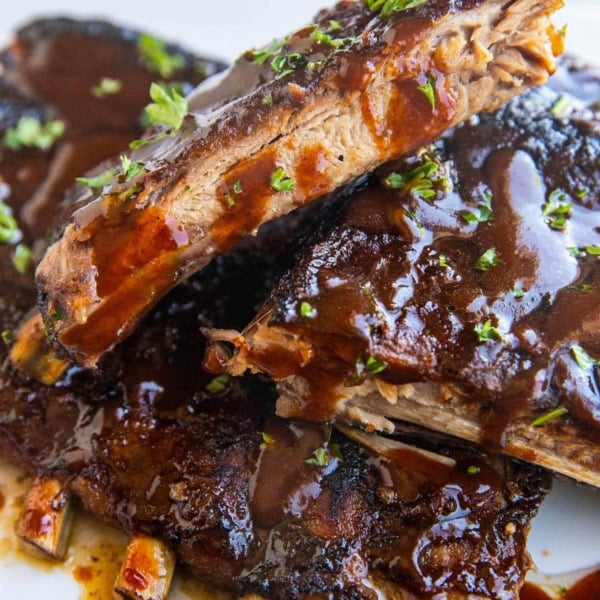
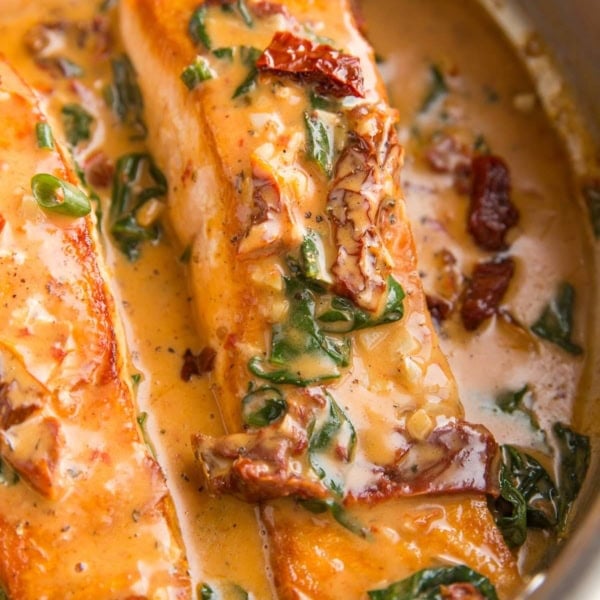
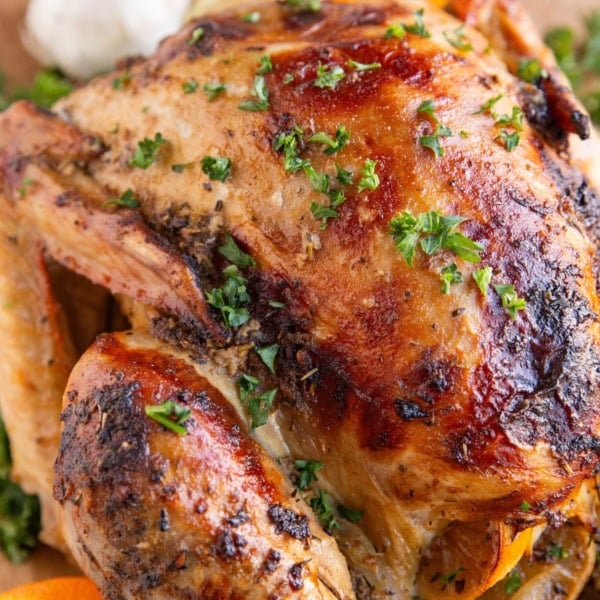
Use Beet Powder to enhance the red color. More concentrated than juice Available online if you cant find it at a store near you.
Ooh, what a fabulous idea! I hadn’t thought of that! Thank you for sharing 🙂
Here’s the thing. I have been following a sodium reduced diet for a number of years. I love to cook and tend to modify many recipes pertaining to sodium. Obviously corned beef is quite salty(especially the store bought version) my question. What would be the minimum amount of salt for the brine for lets say a five pound brisket? Also, any idea how much sodium stays in the meat and what may be released during the rinsing process.
Thanks.
Hi Will! I wish I could be more helpful, but I’m not sure how to answer either of your questions. For a proper brine there is a minimum amount of salt for preservation purposes so that the meat doesn’t grow bacteria during the brining process, but I’m not sure what that would is. I’m not sure how much salt stays in the meat after brining. I did some quick googling and it seems as though you can reduce the salt. This article may be helpful: https://www.thekitchn.com/use-a-quick-brine-to-make-any-cut-more-tender-47879
Saw this recipe yesterday, my regular farm stand sold out of brisket. However farm stand #2 had one so I am all set. If you don’t hear back from me- it was awesome!
Yaay! I’m thrilled you’re trying it! Hope it turns out great! xo
Hello there,
Thanks for this pure recipe. I read somewhere if you add some beetroot juice to the brine, it will give the pink “shop bought”colour.
Regards
Carol
Oh yes, I like that idea! Thank you for sharing, Carol! xo
Cannot wait time try this mom used to make it and it was delicious, but I wouldn’t buy anymore because of the ingredients. Where do you get your grass-fed/finished briskets? Thank u so much
Hi Geege! I buy mine from Whole Foods. My particular brisket came from a pasture-raised cow that was finished on a non-GMO diet (so not grass-finished).